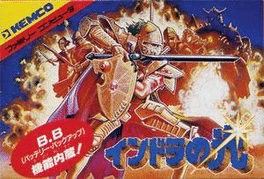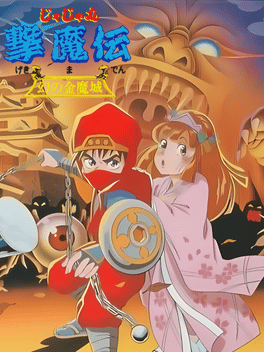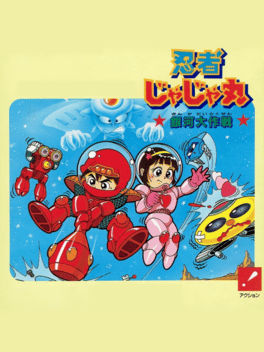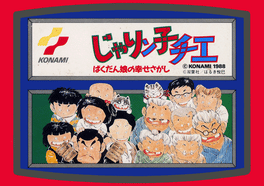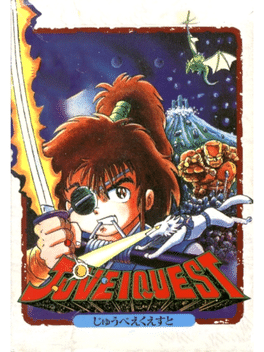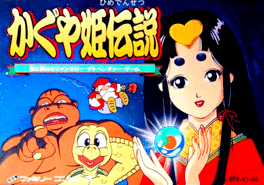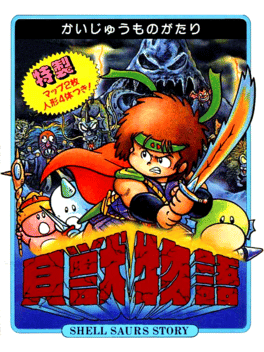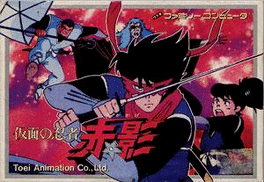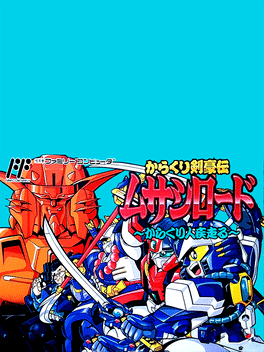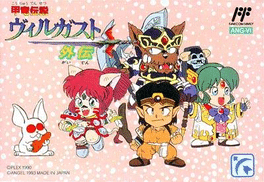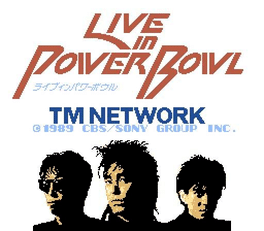Most Popular Family Computer Games - Page 43
-
Indra no Hikari
1987
Indra no Hikari
1987
Around the year 2000, mankind departs a depleted earth and travels through space to the plant Ibaru some 8,500 light years away. There, people live peacefully under the protection of a god whose power source is the Light of Indora. However, a demon siphons the light away from the planet and the god begins to slumber. The surface of the planet transforms into a vast desert and monsters begin to appear. The player must quest to put an end to the demon and restore the Light of Indora to the god that protects the planet. -
JaJaMaru Gekimaden: Maboroshi no Kinmajou
1990
JaJaMaru Gekimaden is an action role-playing game, with gameplay similar to The Legend of the Zelda. Players control the protagonist character through towns, dungeons, and a world map. Each different type of map features top-down exploration. When moving through a dungeon, the protagonist will gradually recover health. The protagonist can equip different types of weapons and items that he can buy or find and use them during combat. Dungeons are made up of several rooms with enemies inside. Occasionally, an enemy will drop money when defeated, which can be used to buy items or heal health points at an inn. -
JaJaMaru Ninpouchou
1989
JaJaMaru Ninpouchou
1989
"JaJaMaru Ninpouchou" is a ninja themed role-playing game. Play as Jajamaru and Princess Sakura as you explore around a world map visiting towns and dungeons. Fight against random encounters using the separate turn-based combat screen. -
Ninja JaJaMaru: Ginga Daisakusen
1991
Ninja JaJaMaru: Ginga Daisakusen is an Action game, developed and published by Jaleco, which was released in Japan in 1991. -
Jarinko Chie: Bakudan Musume no Shiawase Sagashi
1988
"Jarinko Chie: Bakudan Musume no Shiawase Sagashi" is a graphical text-adventure game. It is a game based on the Jarinko Chie anime and manga about a dependable girl who struggles to help her troublesome father run a small tavern in Osaka. Unbeknownst to her dad, she occasionally visits her mother who left him not too long ago. She plans on trying to reunite them, but not until her father gets a job. Though it is largely text driven, there are moments where the player must play a mini-game in order to advance to the next chapter of the story. -
JESUS: Kyoufu no Bio Monster
1989
JESUS: Kyoufu no Bio Monster is a port of the popular computer game Jesus for Famicom. Some changes were made to the story development and dialogue (for example, the partner you act with in the latter half of the story can be chosen in the PC version, but in the Famicom version it is fixed to Elline), and some adult-oriented graphics and scenes were changed or removed due to the age group of Famicom users. -
JJ
1988
JJ
1988
JJ is an action game developed and published by Square for the Famicom in 1987. In English, it is sometimes referred to by its long form, Jumpin' Jack, or by its subtitle, Tobidase Daisakusen Part II. The game was only released in Japan. The sequel to Tobidase Daisakusen (known in North America as 3-D WorldRunner), JJ is a typical scrolling shooter, but it incorporates a third-person view, where the camera angle is positioned behind the main character. As in the previous title, the main character Jack must travel through various worlds, armed with his laser cannon and jumping ability, to defeat the serpentbeasts who have overrun the planets. JJ was the last game by Square to utilize the "3D mode" and 3D glasses, and was Square's last work before the inception of the popular Final Fantasy franchise. The soundtrack of JJ consists of eight tracks, and all of them are either remixed or reused from the game's prequel, 3-D WorldRunner. The game was scored by Nobuo Uematsu, and is Uematsu's 16th work of video game music -
Jumpin' Kid: Jack to Mame no Ki Monogatari
1991
The evil Giant has kidnapped Jack's girlfriend and now he must travel up the beanstalk and return to the Giant's castle in the sky to save her! Jack must use all his jumping ability and wits to climb the dangerous beanstalk without getting hurt. Many wildlife creatures and the minions of the Giant stand in his way. -
Juvei Quest
1991
Juvei Quest
1991
Juvei Quest is a Role-Playing game, developed by Birthday and published by Namco, which was released in Japan in 1991. -
Kagerou Densetsu
1990
Kagerou Densetsu
1990
Kagerou Densetsu is a Role-Playing game, developed by ITL and published by Pixel Multimedia, which was released in Japan in 1990. -
Kaguya-hime Densetsu
1988
Kaguya-hime Densetsu
1988
Kaguya-hime Densetsu is an Adventure game, developed by Micronics and published by Victor Interactive Software, which was released in Japan in 1988. -
Kaijuu Monogatari
1988
Kaijuu Monogatari
1988
Kaijū Monogatari is a role-playing video game developed by Birthday and published by Namco for Famicom, in November 1988 in Japan. -
Kaiketsu Yanchamaru 2: Karakuri Land
1991
Kaiketsu Yanchamaru 2: Karakuri Land is an Action game, developed and published by Irem, which was released in Japan in 1991. -
Kamen no Ninja Akakage
1988
Kamen no Ninja Akakage is an Action game, developed by Shouei and published by Toei Animation, which was released in Japan in 1988. -
Karakuri Kengou Den Musashi Lord: Karakuri-jin Hashiru!
1991
Karakuri Kengou Den Musashi Lord: Karakuri-jin Hashiru! is a Role-Playing game, published by Yutaka, which was released in Japan in 1991. -
Keroppi to Keroriinu no Splash Bomb!
1994
Keroppi to Keroriinu no Splash Bomb! is an Action game, developed by Geo Factory and published by Character Soft, which was released in Japan in 1993. -
Kujaku-ou II
1990
Kujaku-ou II
1990
The adventure continues as Peacock faces the incarnation of general Nobunaga Oda. Team up with Asura, a fiery spirit, Jukindo master Onimaru, and Zen master Kou Kaifou to fight Nobunaga's missionary minions with a vast array of Shingon spells! Travel to the mystic world of the Lotus mandala and defeat Hindu demons, dark boddhisattvas, and the shadowiest villain yet, the Phoenix! -
Kouryu Densetsu Villgust Gaiden
1993
Kouryu Densetsu Villgust Gaiden is a Role-Playing game, developed by TOSE and published by Angel (Bandai), which was released in Japan in 1993. -
TM Network: Live in Power Bowl
1990
TM Network: Live in Power Bowl is a Japanese-only Nintendo Family Computer game featuring the J-Pop group TM Network. The song used as the background music is "Come On Everybody" from their album Carol - A Day In a Girl's Life 1991 -
Lost Word of Jenny: Ushinawareta Message
1987
Jenny’s on her way to the theater to practice for an upcoming role. Her script gets stolen though and has to track the pages down in different stages which are entered through the hub world. Once you collect a key and memorize letters and numbers, you go to the theater and use them to unlock the combination lock. Jenny has 2 abilities: punching and kicking, and after picking up powerups, throwing stars and bug spray
